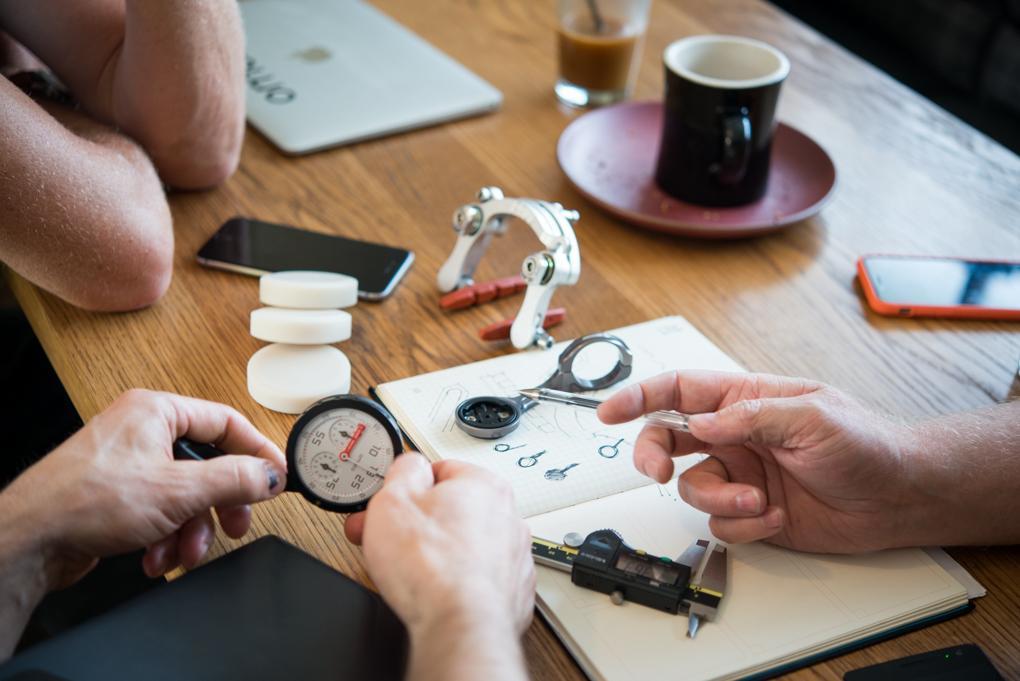Originally written by Sasha Segan, PCMag UK 14.7.2017
When hardware Kickstarters go off the rails, this crew of Finns throw them a life preserver
Hardware is hard, they say. Kickstarter and Indiegogo are littered with big-ticket consumer hardware failures: the $1.5-million Pirate3D printer, the $3.5-million MyIDKey, and the $3.2-million Zano drone, for example. Other crowdfunded projects fail, but hardware projects tend to fail big.
Kickstarter recognizes the problem. Over the years, it’s tightened its requirements for hardware projects, finally announcing a new “Kickstarter Hardware Studio” last month that will debut in September and help creators actually, successfully make devices.
A 2015 report commissioned by Kickstarter said that about 9 percent of all Kickstarter projects fail. The problem with consumer hardware, as a 2012 analysis I did pointed out, is that hardware projects are often big-ticket items. Compared to, say, a $20,000 theater performance, more people get burned when a million-dollar printer project melts down.
The story is often the same: Entrepreneur has a great idea, entrepreneur’s great idea gets way too much money, entrepreneur doesn’t know how to manufacture the product to meet the sudden demand. Misery ensues.
Way up in the Finnish sub-Arctic, we found another solution. Haltian, an 85-person company mostly made of ex-Nokia engineers, has been quietly churning out Kickstarter and Indiegogo successes, both for itself and others. The QuietOn headphones and OuraRing wearable (pictured below), which made $651,803 on Kickstarter, are two of the most notable.

The company, like the city of Oulu itself, is a bit of a recycled industry. Oulu was a major R&D center for Nokia in its mobile-phone glory days, and Haltian’s original five-person team was in Nokia’s “emerging projects” department, building tablets and wearables that would never make it to market. When Nokia collapsed in 2012, Haltian’s now-CEO Pasi Leipälä leveraged his knowledge of Nokia’s suppliers to start a contract manufacturer. Now Haltian has an airy suite of offices in a bustling technology-incubator building that used to house Nokia offices. “Eighty percent of our products are our clients’ ideas. We provide design services, and they own the IP,” Leipälä said. Although Haltian usually gets hired before the crowdfunding starts, it can also step in when Kickstarted companies realize they’re in over their heads.
“In most cases, the startups in Kickstarter do not have the understanding [of] what development of a commercial product requires, and without the right partners, try to do too much. That’s one of the key reasons [for the] high percentage of failed projects,” Leipälä said.
Take Omata, a “mechanical biking computer” with a Shinola-like retro look; it netted $229,904 on Indiegogo. Though Omata was also started by an ex-Nokia crew, “They didn’t have a clue how to make it,” Leipälä said. “We designed the motors and then had Seiko from Japan manufacture it.”

Access to trusted manufacturing partners is one of Haltian’s big advantages. The Chinese manufacturing ecosystem is rife with IP theft: Look at the 2015 hoverboard fad to see how quickly one company’s idea got copied, permuted, and watered down. Since there are still electronics factories in Finland—another legacy of Nokia—Haltian can make prototypes in Finland and then take them to factories in Eastern Europe or “Asia” (Leipala’s word) that aren’t likely to steal customers’ intellectual property.
“We don’t take any products to China in the early phase, for … some reasons,” Leipälä said.
Haltian’s projects do have a theme. They’re elegantly designed, by and large, with rounded edges and simple interfaces. Remember Nokia’s physical designs in the era of the Nokia N9—the simple, bold shapes made of colorful polycarbonate? Well, the heritage shows.
Now, the company is moving into “camera and imaging products,” according to Leipälä, and is even developing a video game for a client. “There’s a good demand for a highly skilled, specialized engineering team,” he said.
Read article: What is the Haltian way of product design?
